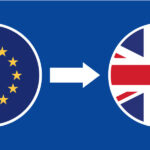The US Dollar (USD), symbolized as $, is more than just the official currency of the United States of America. Its influence extends globally, recognized as legal tender in places like the British Virgin Islands, Ecuador, El Salvador, Liberia, Panama, Zimbabwe, and several other nations. The USD stands as one of the world’s most pivotal and recognized currencies.
Tracing back its origins, the US Dollar emerged shortly after the American colonies declared independence in 1776. By 1785, the dollar was officially adopted, replacing a patchwork of colonial currencies and Spanish money that had been in circulation. This move positioned the USA as the first country to embrace a decimal system for its currency. Initially pegged to the price of silver, the US Dollar transitioned to the gold standard in 1900. The Dollar’s global prominence solidified further with the Bretton Woods system in 1944, where it served as the linchpin currency until the system’s collapse in 1971. That same year marked the end of the gold standard for the USD, ushering in an era of free-floating exchange rates.
The anatomy of the US Dollar is straightforward: it is divided into Dollars and Cents, with 1 US Dollar equaling 100 Cents. In terms of physical currency, coins range from 1 Dollar down to 1 Cent. These are complemented by banknotes in denominations from 1 to 100 Dollars, commonly used in everyday transactions. While banknotes exceeding 100 Dollars haven’t been printed since the mid-20th century and are rarely seen, they technically remain legal tender.
For a significant period, the US Dollar held the mantle of the world’s strongest currency. However, the introduction of the Euro (€) in 1999 presented a formidable counterpart. The Euro Dollar exchange rate (EUR/USD) is a critical benchmark in global finance, rivaled by the Japanese Yen in currency market influence. Beyond currency trading, the Euro Dollar exchange rate (EUR/USD) significantly impacts commodity pricing, notably crude oil, which in turn affects prices for fuels like heating oil and gasoline. A stronger Dollar against the Euro typically translates to increased costs for these commodities. The dynamic relationship between these two currencies, reflected in the constantly fluctuating Euro Dollar exchange rate (EUR/USD), is determined daily in the foreign exchange markets, shaping international trade and economic landscapes.

